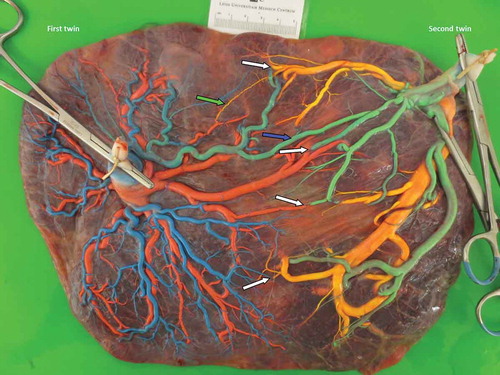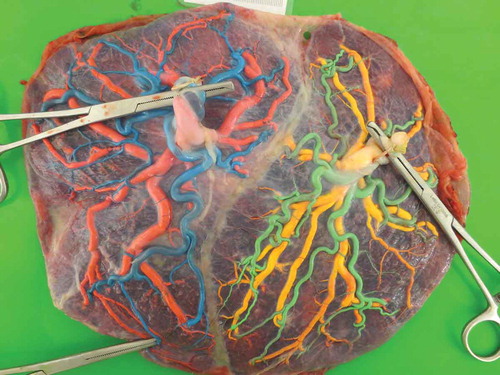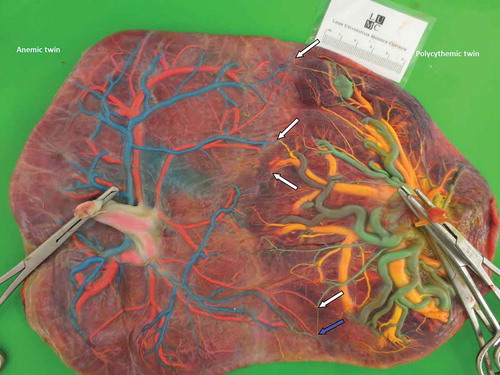Figures & data
Figure 1. (Full color available online) Uncomplicated monochorionic twin placenta after color dye injection showing large vascular anastomoses. Arteries are injected with blue and green dye and veins are injected with pink and yellow dye. Arterio-venous anastomoses are indicated with white arrows, an arterio-arterial anastomosis is indicated with a blue arrow and a veno-venous anastomosis is indicated with a green arrow.

Figure 2. (Full color available online) TTTS placenta treated with the Solomon technique in which a laser coagulation line is clearly visible along the vascular equator.

Table 1. Differences between TTTS and TAPS.

